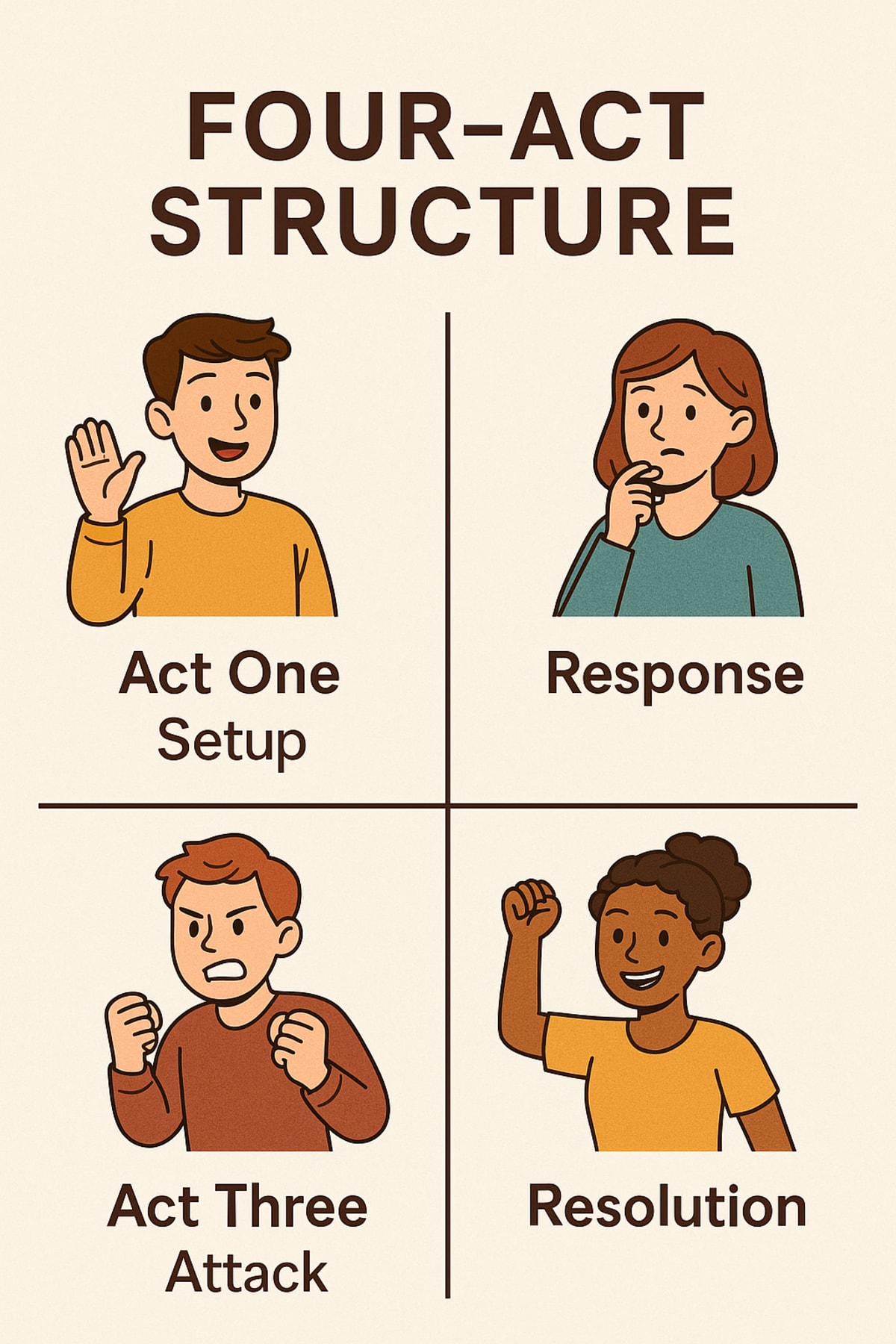I'm not one for using strict formats and structures in my writing, I tend to sit down and write, and not always in a logical order. But I can see the advantage in some cases. I have to admit, I lean toward the four act structure as a write, but it's not intentional, just natural.
Many aspiring novelists are often taught to rely on the classic three-act structure: beginning, middle, and end. It’s familiar, reliable, and widely used for good reason. But many writers find that the middle, Act Two, can be a place where stories sag, momentum drags, and characters lose clarity. That’s where the four-act structure can be a game changer.
Rather than reinventing the wheel, the four-act structure refines it. It takes the traditional three-act model and simply divides the long, often muddled middle into two more focused parts. The result? Better pacing, deeper character arcs, and a more satisfying narrative flow.
Here’s how it breaks down:
- Act One – The Setup
- Introduce your characters, their world, and the central conflict. The inciting incident should shake the status quo and raise questions your reader wants answered.
- Act Two – The Response (First Half of the “Middle”)
- Your protagonist is reacting more than acting. They’re learning, struggling, and discovering stakes. This act ends with a midpoint twist or revelation that forces change.
- Act Three – The Attack (Second Half of the “Middle”)
- Now your protagonist shifts into proactive mode. They start making bolder moves, taking risks. Conflict intensifies, and subplots pay off. The story barrels toward crisis.
- Act Four – The Resolution
- The climax hits, choices are made, and consequences unfold. Loose ends tie up, and the protagonist's journey comes full circle.
So, Why Use the Four-Act Structure?
1. It Prevents the “Middle Slump”
The most common pitfall in novel writing is the flabby middle. By splitting the second act, you gain a midpoint that acts as a powerful turning point. It gives your narrative a second wind just when readers might otherwise drift.
2. It Improves Character Arcs
Seeing your protagonist shift from reactive in Act Two to proactive in Act Three helps highlight their growth. You’re not just telling a story, you’re showing transformation.
3. It Clarifies Stakes and Pacing
With more frequent turning points and better defined narrative phases, the four-act structure helps you maintain tension. Each act has a purpose, keeping your story tight and engaging.
4. It Supports Subplots More Naturally
When you’re dealing with multiple character threads or thematic layers, the four-act model offers natural beats where these elements can rise and resolve without cluttering the main arc.
5. It’s Intuitive Yet Flexible
The structure is easy to map out but doesn’t restrict creativity. You can still surprise your reader, take detours, and develop complex themes, all within a framework that guides rather than confines.
Final Thoughts
Whether you’re outlining your first draft or trying to fix a messy one, the four-act structure can give you the clarity and momentum your story needs. It’s not about following rules, it’s about finding rhythm. And for many writers, four acts offer the right beat to tell their best story.
Copyright © Brittle Media Ltd. August 2025
Help Me to Publish My Books & Fight Cancer.
At 71, I’ve already published 11 novels despite cancer, diabetes, and heart disease. Now I have 21 more worlds waiting to be written.
Through Brittle Media Ltd, we’ll publish these stories and support others by donating 10% of profits to cancer charities.
Join us and be part of the story: https://gofund.me/ef873264
